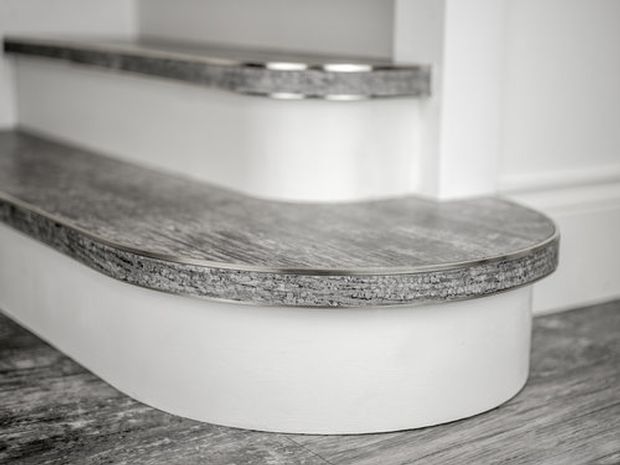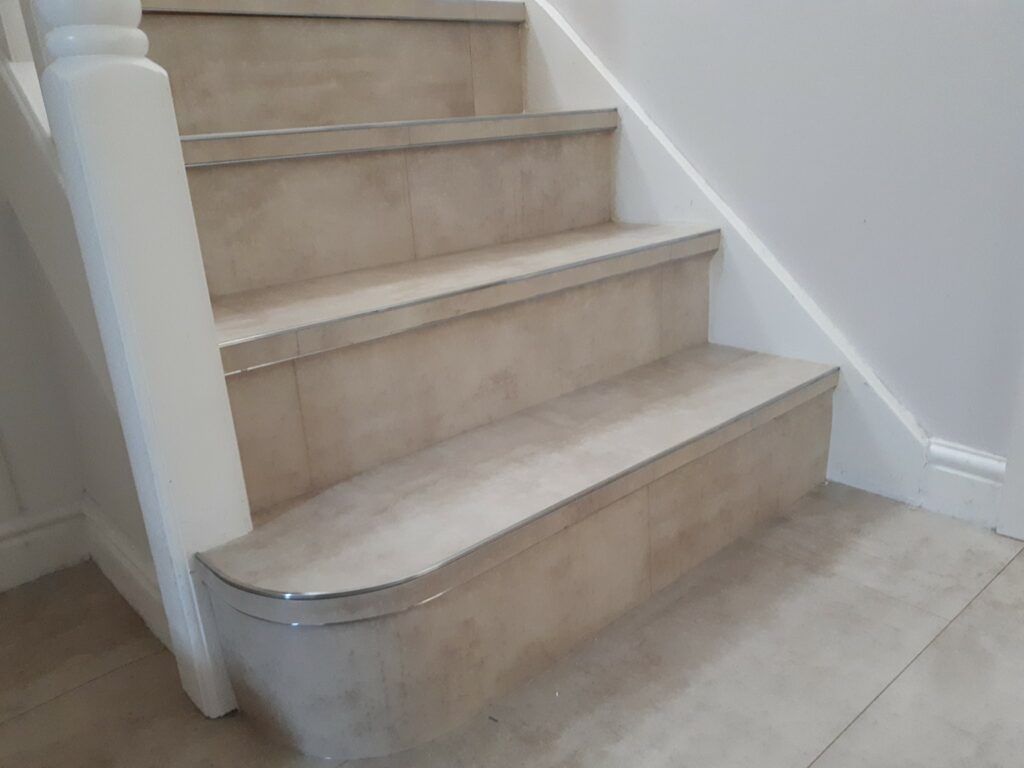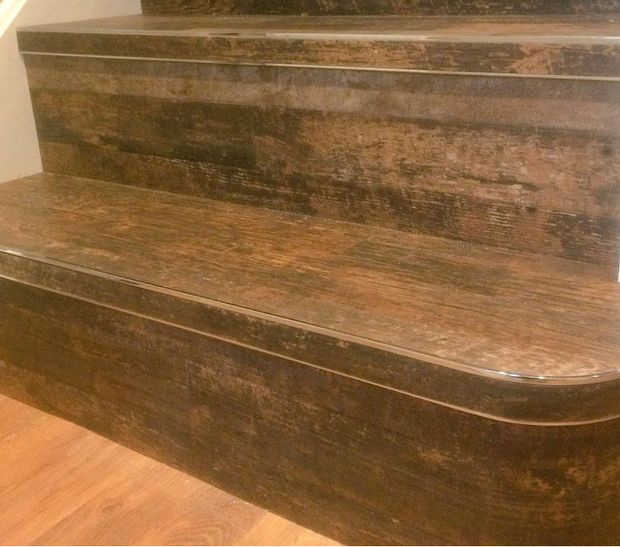Everything to Know About Bullnose Stair Nosing

Stair nosing may already be considered an essential part of a staircase for a commercial property, but they can also make a great addition to homes as well. By adding bullnose stair nosing to your home, you’ll be bringing a new, aesthetically pleasing touch to your stairs, while making sure they’re safer than ever for you to walk on.
Below, we’ve included some information you should know about bullnose stair nosing before you decide to buy, so take a look and contact us when you know which pieces you want for your stairs.
What is Stair Nosing?
Stair nosing, which you might also see called stair nosing edge trims, are used to cap or finish stair treads (the corner edge of the steps of a staircase). They’re usually applied to solid wood staircases, but can also be fitted for laminate flooring, and are used to provide stability and to protect the staircase from damage. Having them fitted also enhances the staircase’s appearance for added visual appeal.
What Makes it Bullnose Stair Nosing?
It’s called “bull nosing” because it offers a rounded vertical edge, much like the shape of a bull’s nose. For this reason, bullnose stair nosing is designed for laminate flooring or wooden staircases with a similarly rounded edge. This allows it to curve around the front edge of the stair, resulting in a smooth profile and a tight-fitting protective finish that won’t move or slip when you’re trying to walk on it.
What Material Finishes Does It Come In?

Our straight and bendy bull nosing is available in a range of different finishes. These include:
- Antique Brass
- Black
- Brass
- Brushed Chrome
- Bronze
- Chrome
- Pewter
- Polished Nickel
- Satin Brass
- Satin Nickel
The design finish you decide on will normally depend on the colour of your staircase and your own personal tastes. However, it’s important for you to choose a finish that complements the design of the staircase as it stands, if you want to make the most of its potential as decoration as well as use it for protecting the edge of your stairs.
What are the Benefits of Bullnose Stair Nosing?
The greatest benefit that you’ll find with using bull nosing for stair edging is the protection and added level of safety it offers to your staircase. By adding stability to the edge of each tread, you’ll be creating an anti-slip feature for your staircase, minimising the risk of someone tripping and falling, and preventing accidents and potential injuries.
The other benefit that you’ll find to bullnose stair nosing is the aesthetic appeal provided by its installation. The rounded edge of this variety offers a smooth profile for any staircase just in terms of its shape, but the available finishes also mean you’ll either be able to make a seamless transition from nosing to stair, or create an edging finish that catches the eye.
Other types of stair nosing you may wish to take a look at include:
- Aluminium stair nosing
- Anti-slip stair nosing
- Polished brass stair nosing (as well as other brass types)
- Single or double channel stair nosing
- Ramped Edge stair nosing
How to Install Bullnose Stair Nosing

What you’ll need to do exactly to install your bullnose stair nosing will all depend on the nosing itself, as well as the type of staircase you have. However, there are some steps that will need to be taken, no matter which type of stair nosing you’ve decided on:
Cleaning
If you’re installing bullnose stair nosings for laminate or solid wood floors, you must make sure that the floor is clean and in a good condition before you begin. This means making sure the area is free of dust and that there aren’t any cracks in the flooring.
To make sure of this, you should vacuum the area and wipe down the stairs to produce a smooth, clean surface. If there are any cracks, holes, or other forms of damage, then you should apply a wood filler to these, allow it to dry, and then sand it down so it’s level with the rest of the floor.
Measuring
You will also need to measure your staircase, so that you can be sure your straight or bendy bullnose stair nosing will fit as you are imagining. This means measuring each stair, especially paying attention to stairs that curve, change shape, or change size (like you’d find in curved or L-shaped staircases).
Prepping
There are several steps to take to prep your stair nosing, which may begin with cutting your pieces into the lengths required. Some bullnose stair nosing can be bought at pre-cut lengths, but if you are going to attempt this work yourself, you should make sure that you are accurately marking out your measurements and double-checking them before making the first cut.
Doing this helps to ensure that the product isn’t ruined in error. If you’d like to be doubly sure before you fit the nosing to the stair, we’d recommend cutting the pieces slightly bigger so that there is room for trimming before the work is complete.
Dry Fitting
Before you make any final fixings with screws or construction adhesives, we would highly recommend dry fitting your bullnose stair nosing to make sure that everything has been measured correctly.
If you would like to learn more about this, or to see a more comprehensive guide on how to install stair nosing, please click through and take a look at our advice page.
Need Bullnose Stair Nosing for Your Home?

If you’ve been thinking of adding a simple but effective anti-slip safety measure to a wooden or laminate staircase, take a look at our straight and bendy bullnose stair nosing in brass and other related brass colours, chrome, pewter, and more here. We have a fantastic selection to choose from, each of which will make an ideal addition to your staircase.


